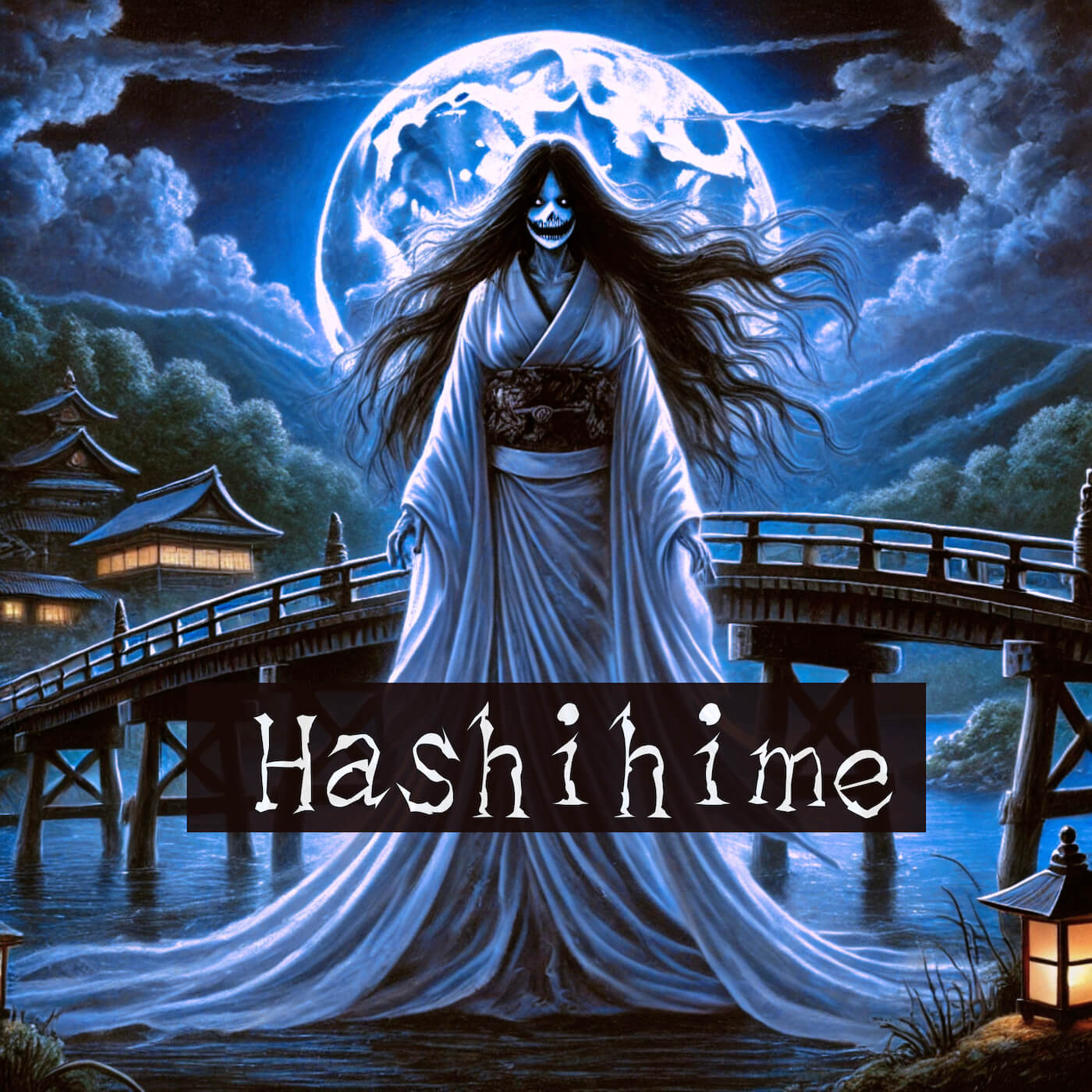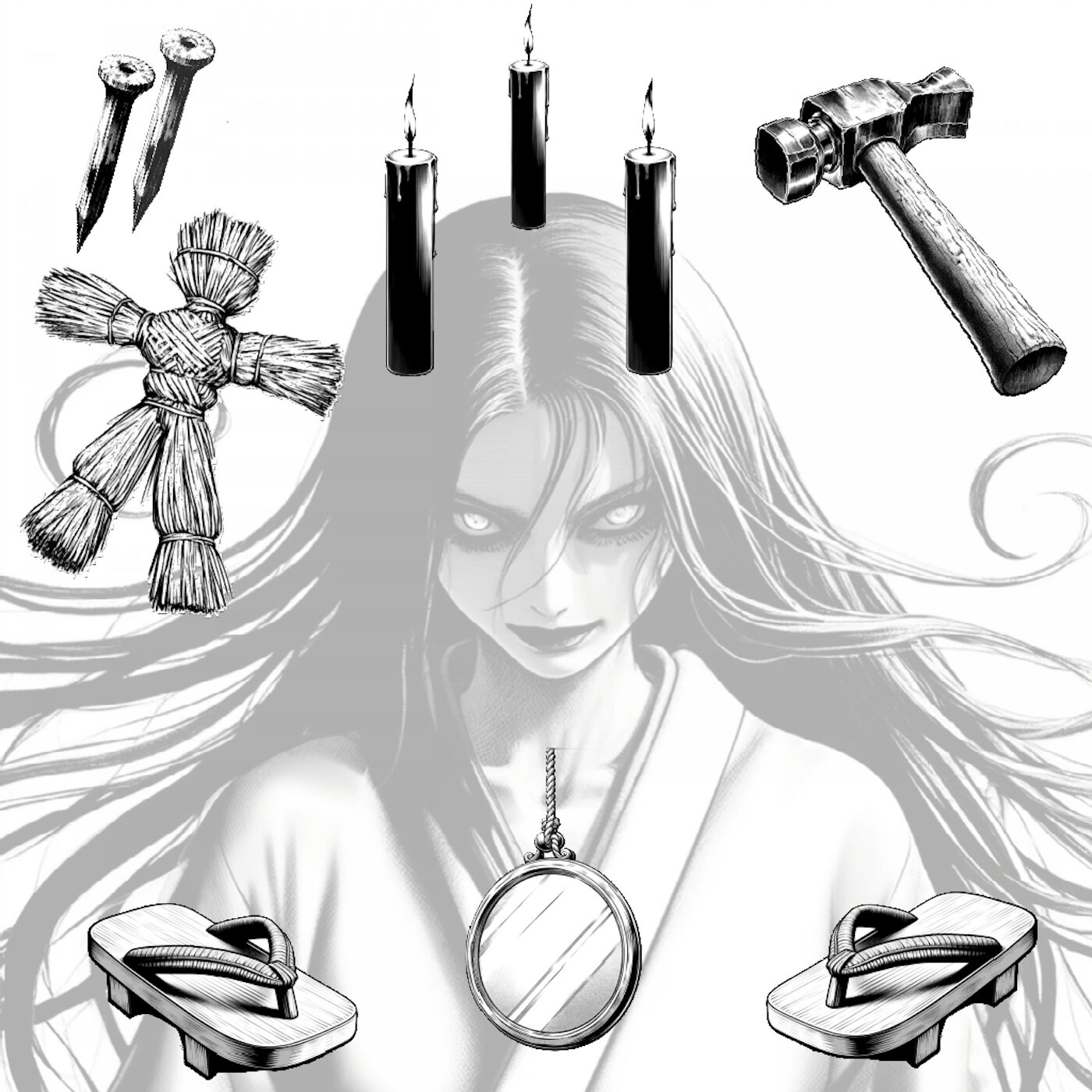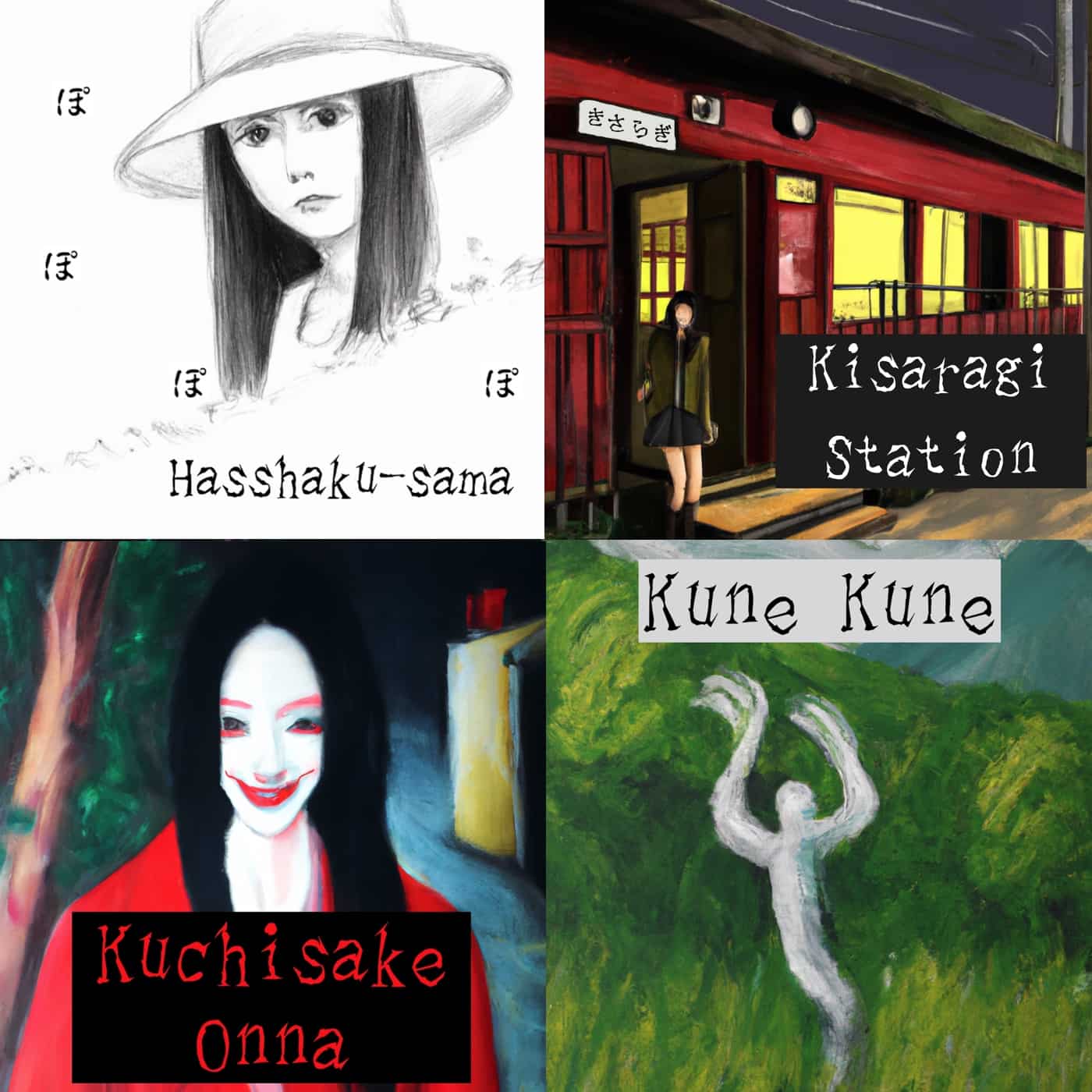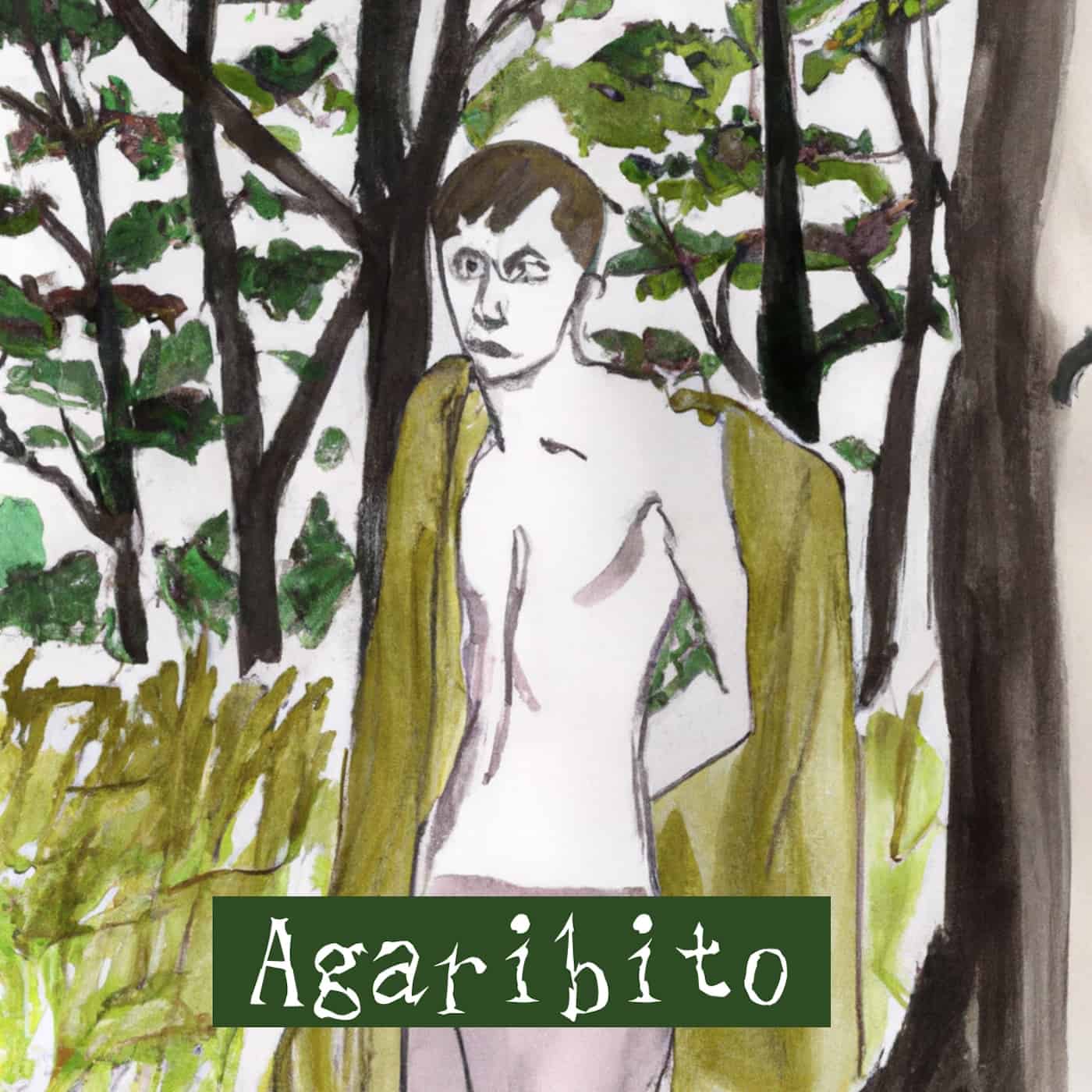Today, I will introduce Hashihime, goddesses turned into demons in Japanese legend associated with old bridges.
A jealous woman becomes a demon trapped by hatred… Join me as I unravel the legend of the goddess worshipped around the bridge.
What is Hashihime in Japanese Legend?
Hashihime (橋姫) refers to a goddess who appears in Japanese folklore and ancient books. Hashi (橋) is translated as bridge and Hime (姫) as princess in English. As the translation suggests, she is a guardian deity associated with bridges.
Origin & History
There are various theories as to its origin, but it has long been believed in Japan that spirits dwell near water, especially bridges. Also, deities near water have often been considered goddesses. These beliefs have led to Hashihime, which continues to this day.
In some cases, there are existing shrines near the bridges protected by Hashihime. Local people still visit such shrines and worship her to this day.
Characteristics
Despite their existence as guarding deities, most Hashihime are often spoken of as being very jealous goddesses. (I’ll tell you more about why later with the legend stories.)
Therefore, it is said that praising other bridges on the bridge where Hashihime is enshrined, or singing songs about female jealousy, will provoke her anger and bring misfortune.
For this reason, Hashihime is also said to be the goddess of cutting relationships or divorce. Not a few people visit Hashihime shrine with the aim of breaking off bad relationships.
On the other hand, it is considered taboo for lovers and wedding ceremonies to cross the bridge of Hashihime or to cross in front of Hashihime shrine. Well, you wouldn’t do that unless you don’t want to secure your relationship with your lover, would you?
Hashihime Legend Story (podcast)
Uji no Hashihime (宇治の橋姫)
Uji no Hashihime (宇治の橋姫) is a legend recorded in the Heian period around the 9-10th century. Uji is the name of the area in Kyoto, and there is Uji Bridge that we can still see now.
There was a girl in Kyoto who was formerly the daughter of the rich. One day she became intensely jealous of a woman and developed a hatred for her because of the man she liked. She spent seven days in Kifune Shrine (貴船神社), praying, “I want to curse a certain woman to death. Please turn me into a demon”.
The deity of Kifune Myojin felt pity and then oracled her to change her form and immerse herself in the Uji River for twenty-one days.
Then, she dressed in white, with her hair tied up in five buns to look like horns, her face covered in vermilion, and her body in red with reddish tan. She also put a three-legged iron ring on her head upside down, set a torch in each leg, and held another two torches lit at both ends in her mouth.
Every night, she immersed herself in the Uji River for twenty-one days. After completing her asceticism, she finally fell into the demon state. After that, she killed the woman she was after, then the lover of the woman, then all of the woman’s relatives. Finally, she went berserk and killed everyone in sight.
Therefore, people in Kyoto no longer invited others into their homes or went out after dusk.
A samurai called Minamoto no Tsuna (源綱) was sent to bring the situation under control. He was walking at night on a bridge called Ichijo-Modoribashi Bridge (一条戻橋) with a sword called Higekiri (髭切/Moustache Cutter) when he saw a beautiful woman walking there. She had snow-white skin and appeared to be around 20 years old.
Tsuna, who thought it dangerous for the woman to walk on the bridge at night because of Hashihime, offered to bring her home along. She then asked him to take her to her house outside Kyoto. Tsuna agreed and took her on his horse, at which point she changed her appearance to that of a demon. She was actually the Hashihime who had turned into demon.
She grabbed Tsuna by the hair and tried to take him away, but he cut off her arm with Higekiri he was carrying. Hashihime thus escaped, and there was a remaining arm, which should have been white as snow, but turned black and covered with white hairs like silver needles.
The demon’s arm was sealed, and Higekiri, the sword that cut off the arm, was later called Onikirimaru (鬼斬丸), which can be translated as Demon Slayer.
Nagara no Hashihime (長柄の橋姫)
Nagara no Hashihime (長柄の橋姫) is another legend of Hashihime that is associated with Nagara Bridge in Osaka. The legend dates back to around the 6~7th century.
At that time, many attempts were made to build a bridge over the Nagara River, but each attempt failed. Then, they reached the conclusion that they should sacrifice someone for success.
While they were discussing who should be the target, a man came with his wife and a child, and rested on the timbers of the bridge. The man was wearing a hakama (袴) with a tear in the knee sewn with white cloth. The man said “if one is to stand as a sacrifice, a man whose hakama has a tear sewn away with a white cloth should be chosen”. When the people saw his appearance, they said, “Then there is no one else but you” and decided to make him a sacrifice. His wife was so grieved that she threw herself into the river with her child and later became Hashihime of Nagara Bridge.
Later, it is said that the song she read as she threw herself into the river was linked to famous Japanese proverbs, such as “Mouth is the source of misfortune (口は災いの元)” and “If a pheasant does not cry, it will not be shot (雉も鳴かずば撃たれまい)”, and this legend became widely spread.
What is the connection between Hashihime and Ushi no toki mairi

There is another legend/ritual often performed by vengeful women, Ushi no Toki Mairi (丑の刻参り). Ushi no Toki Mairi is a Japanese cursing method that involves seven-nightly visits to a shrine and nailing a Wara Ningyo (straw doll) to a tree.
Because of the similarities in the actions and the fact that the origin of Ushi no Toki Mairi is believed to be also from Kifune Shrine, Uji no Hashihime is considered kind of a prototype of Ushi no Toki Mairi.
↓To deep dive into Ushi No Toki Mairi, you can check out this related article as well!
May Hashihime be in peace now…
From ancient times until now, bridges have been an essential part of the infrastructure for life in the area. In such a situation, it is natural that belief in bridges was born.
When you see old bridges in Japan, you may remember the horror aspect of HashiHime. But it is also true that today, the local people fondly believe in her as well. I also hope you remember her as a local bridge guardian goddess.
↓Check out these related articles as well to find out more about Japanese urban legends/creepypastas!
Find Your Kaidan!
Discover your favourite Japanese scary/horror stories
Categories
Let’s talk
Would you like to analyse the story, make theories on it, and share your thoughts?
Please join our Discord channel
where you can share your thoughts and interact with other Kaidan lovers!











